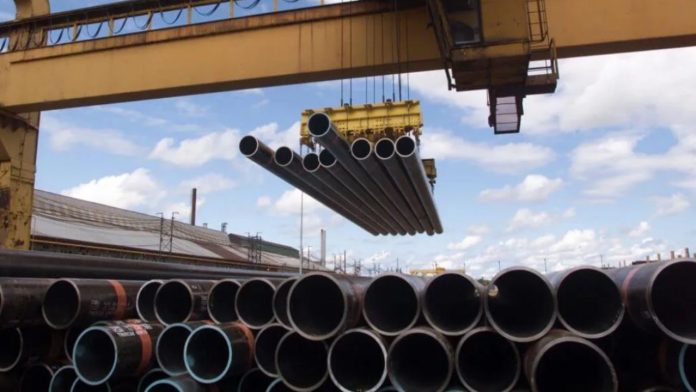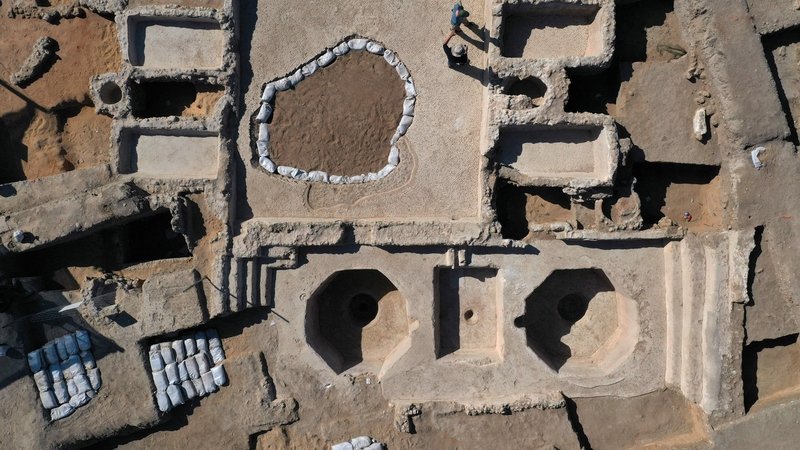API 5L pipes are very essential. It is used for building the framework of infrastructure. Moreover, they are also used in energy projects worldwide. The American Petroleum Institute (API) created and maintains the API 5L Pipe -PLS1/2 Specification. This defines the standards for line pipes in oil, gas, and water transportation. Their use in petroleum, natural gas, water systems, and construction has made them important for their strength, dependability, and excellent performance.
Understanding What API 5L Pipes Are and What They Specify
Oil and gas are moved through the energy industry using API 5L pipes. They can be made as single pieces or welded and their grades range from A to X100, depending on what they are used for. Because they each have unique qualities and may contain additional alloys, they can be applied in many conditions, including those with high pressure or corrosion.
The specification is made up of two product levels called PSL1 and PSL2. Most pipeline applications use PSL1, but PSL2 is chosen when more testing, chemical standards and tougher mechanical properties are needed. Because of their strong and flexible requirements, API 5L pipes are suitable for the tough demands of industrial projects.
An Important Player in the Oil and Gas Industry
Because oil and gas are transported over long and varied routes, the piping systems used must be reliable and strong. Because they can handle strong pressures, extreme weather and corrosive chemicals, API 5L pipes are the most popular. These pipes make sure that materials are transported safely and efficiently.
API 5L pipes are widely used in the oil and gas industry because they have demonstrated good performance in pipeline integrity. Thanks to the strong steel and strict way the tanks are made, leaks and ruptures are unlikely which is important for both the environment and safety. Because of this, there is less downtime and maintenance is less expensive throughout the life of the project.
Water Infrastructure and Urban Development
API 5L pipes are now being used more often in water infrastructure. Since cities are getting more crowded and water pipes are aging, we need piping materials that can withstand high pressure and last for a long time. API 5L pipes are designed to handle the long-term movement of potable water, wastewater, and industrial fluids. The corrosion-resistant types of these materials are well-suited for water desalination and wastewater treatment in industries.
They are important in both utility systems and as structural parts of big construction projects. They are commonly found in pile foundations, as well as in the supports for bridges and tall buildings. Because they are strong and can hold heavy loads, they are often used in tough civil engineering projects.
Promoting Renewable Energy and Carbon Capture
As more people turn to renewable energy, API 5L pipes are being used in new ways for energy infrastructure. To avoid leaks and contamination, pipeline networks used in hydrogen transportation and CCS must be designed to very high standards. API 5L PSL2 pipes, especially those of grades X70 and higher, are suitable for these applications. They ensure the gas doesn’t leak, as hydrogen is small and can escape through regular materials.
In CCS projects designed to cut greenhouse gas emissions, API 5L pipes are used to transfer captured carbon dioxide to storage or facilities for use. It is important that their pressure resistance and ability to resist corrosion are high to ensure safety during long gas transfers.
The Need for Infrastructure and Sustainable Development
As the world’s economies grow and more infrastructure is built, the need for line pipes like API 5L increases. Both the government and private companies depend on these pipes for projects such as national oil pipelines and energy corridors that cross borders. When API standards are used, products are compatible, safe, and meet quality standards everywhere.
In addition, using API 5L pipes helps achieve sustainability goals. Because they last a long time, they are replaced less often, and their recyclability follows circular economy ideas. Thanks to new technology, manufacturers are able to make API 5L pipes with better coatings and materials. This helps them last longer and be more environmentally friendly.
Conclusion
API 5L pipes have developed from basic transport pipes to important parts of today’s infrastructure and energy projects. Valves are used widely in oil and gas, water systems, construction, and renewable energy. This is because of their excellent versatility and performance. With ongoing improvements in infrastructure and energy, API 5L pipes will still be needed to create reliable, efficient, and future-proof networks worldwide.












